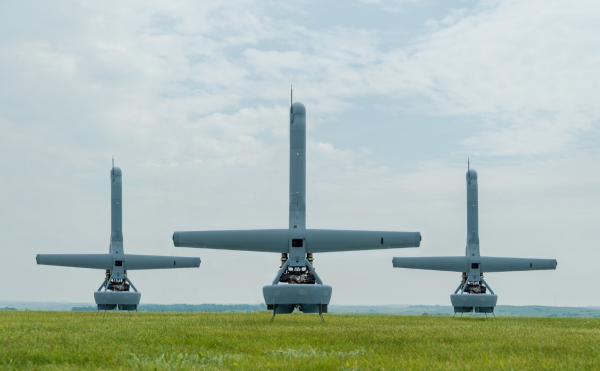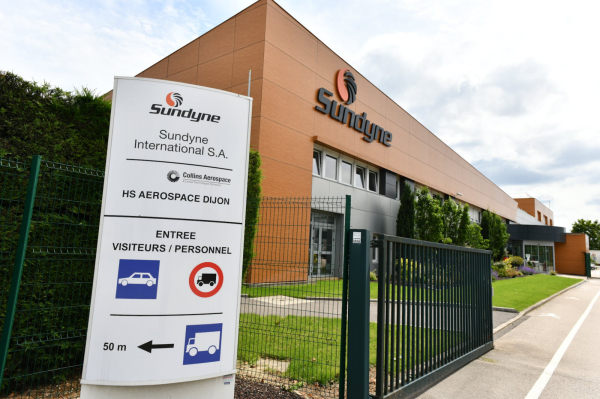
In just over a month, India has gone from boasting about its vaccine distribution to becoming the global epicenter of the COVID-19 pandemic. As this author explained in a previous article, many have questioned whether India’s vaccine diplomacy was a bold masterstroke or an unwise distraction.
Before the start of the second wave of COVID-19 infections in March, the pandemic seemed to be under control in India. In September 2020, the country recorded an average of 95,000 daily cases of COVID-19 during the peak of the first wave. By January 2021, that figure had dropped to under 20,000.
At the same time, the United States went from around 35,000 confirmed cases per day in September to a peak of over 300,000 in January. At the start of the year, the United Kingdom was in the midst of a deadly second wave of infections, which reached over 60,000 cases a day. At that time, Britain was battling a more contagious strain of COVID-19 known as the “Kent variant,” which is named after the region where it was first discovered in England. Countries in Europe and around the world raced to halt flights to and from the UK in a bid to control the spread of the new strain, which they feared would soon go beyond the British isles.
India’s Health-Care System Is in Shambles
READ MORE
To put these figures in perspective, the UK population is 66.6 million, the US is 328 million and India is around 1.36 billion. That means at the start of 2021, the infection ratio per 100,000 people in India was far lower than in the UK and the US.
Lax Safety Measures
As a result, Indians thought the country was beyond the worst of the pandemic. In March, Harsh Vardhan, the Indian health minister, said the country had entered the “endgame” of the health crisis. This led to a false sense of hope, which made the public and the central and state governments complacent. Restrictions that were brought in to curb the spread of the coronavirus were quickly eased. Life had almost returned to normal in January with the opening up of nightclubs, restaurants, hotels, tourist locations and public transport.
At the same time, elections were announced in five states, including West Bengal, which the ruling Bharatiya Janata Party (BJP) had set its sights on winning. All political parties and their supporters held rallies with tens of thousands of people in attendance. The Hindu festival of Kumbh Mela attracted millions of people who took a dip in the Ganges, a river considered sacred in Hinduism. Nearly 60,000 spectators were also allowed to enter stadiums to watch cricket matches. All of these events took place with lax safety measures in place, with no social distancing or wearing of masks.
Embed from Getty Images
In hindsight, India did not anticipate a second wave of COVID-19. It lifted the lid on public restrictions at a time when countries such as the UK were battling a winter wave of infections. As mainland Europe realized, it was inevitable that the more contagious strain of COVID-19 discovered in the UK would spread. India failed to understand this despite repeated warnings.
Now, India is battling its own second wave. The country has repeatedly broken the record for the daily number of confirmed cases of COVID-19. On May 2, India recorded more than 400,000 new daily infections. The actual number of cases is believed to be far higher due to a shortage of testing kits and people getting tested. Many Indians are not getting checked because they have no symptoms but are contagious or they are worried about testing positive for the virus. States like Bihar, West Bengal and Maharashtra have been accused of manipulating and underreporting the number of positive cases and deaths from COVID-19 to avoid criticism over inefficient governance. Worryingly, epidemiologists believe that India has not yet hit the peak of the second wave and that the worst is yet to come.
No Improvement to Health Care
It has been argued by many that the pandemic will not come to an end until it is under control everywhere. This is because “viruses naturally mutate over time.” There are currently thousands of mutations of the coronavirus around the world, but only a few of them are variants of concern for scientists. As more people contract the virus and spread it to others, it is inevitable that different strains will emerge. This is why despite the successful vaccination rollout in countries like Israel, the UK and the US, authorities have been cautious as they reopen economies and reduce restrictions for the public. The fear is that some variants, such as the one discovered in South Africa, will evade the existing vaccines and render them less effective.
India has discovered a worrying COVID-19 variant of its own that is officially called B.1.617. This new strain — which is also known as the “double mutant” due to two mutations coming together in the same variant — accounts for 61% of infections in Maharashtra, a major epicenter in India. It is unclear whether the Indian variant is driving the second wave, but it is believed to be more transmissible than previous strains of the virus. This is in addition to fear over the UK strain, which has spread to more than 50 countries.
Complacency by the central and state governments has made the health care system crumble as Indians desperately seek medical assistance. When the pandemic first hit India in March 2020, authorities failed to strengthen the infrastructure at hospitals. As of 2018, the Indian government spent only 3.54% of GDP on health care. Other emerging economies such as Brazil and South Africa spent 9.51% and 8.25%, respectively. In India, there is only one doctor per 1,445 people, which is far lower than the figure the World Health Organization recommends. At public hospitals, there were only 0.7 beds available per 1,000 people.
Make Sense of the World
Unique Insights from 2,500+ Contributors in 90+ Countries
I agree to receive emails and other content from Fair Observer. I understand that I may repeal my consent at any time. You can review our Privacy Policy and Terms of Use for further information.
In July 2020, state governments opted to build temporary centers for COVID-19 patients instead of buying additional beds for existing hospitals and allocating more resources. These centers were barely used. Due to their high maintenance costs, they were dismantled a couple of months before the second wave hit. Now, as hospitals face a short supply of beds and a high demand for them, some state governments are considering whether to rebuild the makeshift centers.
In March 2020, Modi allocated 150 billion rupees ($2.03 billion) to strengthen the infrastructure of health care in India. The government purchased personal protective equipment (PPE) and an additional 60,000 ventilators. Yet as of last fall, just under 24,000 of the ventilators had been installed in hospitals across the country. Both public and private hospitals are currently short of beds, ventilators and oxygen in many major cities.
As COVID-19 infections sweep the country, social media networks have been flooded with posts calling for help. Friends and families of those suffering from the virus have desperately sought to find available beds in hospitals, oxygen supplies or medication to combat COVID-19. Disturbing reports of people dying after being unable to access treatment have been heard all over the country. Ambulances and other vehicles with COVID-19 victims inside them have lined up outside hospitals that no longer have space available. Many hospitals have reported that patients they were treating died as the oxygen supply ran out. Outside crematoriums, the number of dead bodies is mounting.
The Government’s “Vaccine Diplomacy”
With the situation worsening, the BJP-led government has been criticized by Indian courts for focusing on state election campaigns instead of taking preemptive action to combat the second wave. Aside from easing restrictions too quickly and not reinforcing the health care system in time, many states face shortages of COVID-19 vaccines. In January, Prime Minister Narendra Modi claimed to have rolled out the “world’s largest vaccination drive,” aiming to get jabs in the arms of 300 million people by July. At the time of writing, only 2% of the Indian population — 29 million — has been fully vaccinated with two doses. This is compared to 23% in the UK and 30% in the US, both of which focused on vaccinating their most vulnerable citizens first to drive down new infections and deaths.
India had other things in mind. It sought to distribute doses worldwide as part of its vaccine diplomacy. With the world’s largest manufacturer of vaccines, India has so far exported 66 million doses to 95 countries. Yet, earlier this year, the Modi government implemented an initiative to donate free batches in an attempt to boost the country’s soft power when the pandemic was seemingly under control. Many observers questioned whether the move was necessary instead of focusing on vaccinating Indians themselves. Toward the end of March, as infections increased and vaccines decreased, the Modi government realized that its decision to export millions of doses was premature. It decided to halt the export of doses and instead vaccinate Indians over the age of 45. Yet the damage had already been done due to poor planning by the BJP-led government.
Embed from Getty Images
Meanwhile, state administrations in Maharashtra, Delhi and Andhra Pradesh that are not ruled by the BJP have claimed they are running short of vaccines. Critics have accused Modi of playing politics with vaccine distribution as states with BJP governments, such as Gujarat, were given almost the same number of vaccine doses as Maharashtra, which has a population double that of Gujarat. Vardhan denied that regions were short of supplies and instead blamed state governments for the poor rollout of vaccines.
In order to counter criticism over its inefficient planning, the central government announced on April 19 that all citizens above 18 would be able to get vaccinated from May 1; it had previously focused on health and frontline workers and those over 45. By opening the door for all adults, an additional 600 million citizens are now eligible. Yet with vaccines in short supply, some states have postponed the rollout. The website through which citizens can book a jab crashed minutes after it went live for the new age group.
The government has approved additional funds for vaccine manufacturers to ramp up production. However, the increased production is unlikely to be available for a few months as vaccines go through a lengthy process of packaging and safety checks. To make up for this shortage, the government has fast-tracked the approval process for foreign-produced vaccines. These include Johnson and Johnson from Belgium and Sputnik V from Russia, which cost more than domestically-produced ones.
Public Image
In an attempt to maintain his public image, Modi addressed the nation on April 20. Indians needed assurances and demanded answers, but the prime minister offered none. He neither informed the public about plans to tackle the crisis, nor did he give any reasons about why the country is facing a horrific second wave. This is despite him previously boasting that India’s handling of the pandemic had been exemplary and should a model for the world. It seems the central government is content with placing the blame on state administrations and the public instead of admitting that it made mistakes.
Earlier this week, the BJP failed to win in the state of West Bengal despite heavy election campaigning. It seems that Indians are beginning to realize that Modi’s preoccupation with his public image, and his need to win votes, is costing the country dearly. In fact, the obsession with elections on the part of Indian politicians has contributed to the second wave of COVID-19 infections. India can only hope that Modi and other politicians shift their focus from politics to health care before it is too late.
Source: fairobserver.com



